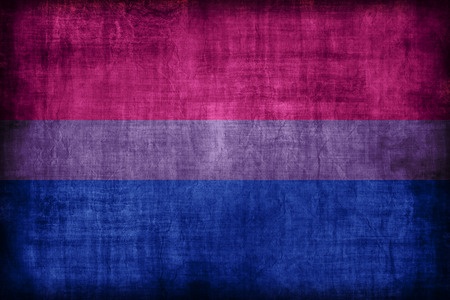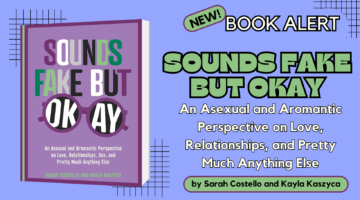5 Things You Should Know About Bisexuality For LGBT Pride Month
June 13, 2018 by Justin Lehmiller
Bisexuality continues to be a widely misunderstood sexual orientation. Given that this is LGBT Pride Month, I thought it would be useful to put together an article that explores some of the key findings that scientists have uncovered about bisexuality that can speak to some of the biggest misconceptions about it. Here goes:
1.) Bisexuality is real, and it’s not the same as being gay or lesbian. A lot of people deny the existence of bisexuality and assume that everyone who identifies as bisexual is secretly gay; however, research finds that bisexuality involves a distinct pattern of sexual interest and arousal compared to homosexuality. For example, consider a study in which participants viewed photos of men and women while researchers surreptitiously recorded how long they spent looking at each one. The results revealed that bisexual persons spent similar amounts of time looking at photos of both sexes, whereas gays and lesbians spent far longer looking at photos of their desired sex. Likewise, other research has found that bisexual men exhibit high levels of genital and psychological arousal in response to both men and women, whereas gay men only show strong arousal in response to men.
2.) Women are more likely to identify as bisexual than men. The results of several national U.S. surveys have consistently found that more women than men identify as bisexual. For example, according to the National Survey of Sexual Health and Behavior, 2.6% of men identified as bisexual compared to 3.6% of women. Other studies have reported much larger differences (for example, see page 32 of this report from the CDC that summarizes the findings from several recent surveys). This could reflect greater societal acceptance of bisexuality among women, or (as some scientists have argued) it could be a reflection of women’s greater erotic plasticity. It is also worth noting that the percentage of American men and women who identify as bisexual appears to be on the rise. This doesn’t necessarily mean that bisexuality itself is increasing; rather, it probably reflects growing comfort with acknowledging this identity.
3.) Bisexuals experience prejudice from heterosexual persons, as well as gays and lesbians. Bisexual persons are frequently the targets of prejudice, particularly bisexual men. They are often stereotyped as being sexually confused and highly promiscuous. However, such biphobia or binegativity doesn’t just come from heterosexual people—it also comes from gay and lesbian persons. As one example of this, both gay and heterosexual individuals report relatively low willingness to become romantically involved with bisexual persons.
4.). Bisexual people do not necessarily have higher sex drives than everyone else. One of the most common stereotypes about bisexuals is that they are extremely horny. However, a 2007 study published in the Archives of Sexual Behavior that featured a sample of over 200,000 participants revealed that bisexuals have sex drives that are pretty similar to most other people. Specifically, sex drive scores (rated on a 7-point scale) were 5.47, 5.28, and 5.26 for heterosexual, bisexual, and gay men, respectively. By contrast, the numbers were 4.51, 4.91, and 4.60 for heterosexual, bisexual, and lesbian women, respectively. As you can see, within a given gender group, the sex drive differences between persons of different sexual orientations were quite small and likely of little to no practical significance.
5.) Being bisexual does not necessarily mean that you are equally attracted to both men and women. Being bisexual involves a capacity for attraction to men and women, but attraction to each sex does not necessarily have to be equally strong. For instance, research has found that bisexual men usually demonstrate more genital arousal to one sex over the other, although the direction of the effect is inconsistent (i.e., some show more arousal to women, others to men). Research on bisexual women has found that they do not exhibit equal levels of arousal to male and female stimuli either. Some bisexual persons may indeed experience equally high attraction to men and women, but equal attraction should not be considered an essential or defining feature of bisexuality.
Want to learn more about Sex and Psychology? Click here for more from the blog or here to listen to the podcast. Follow Sex and Psychology on Facebook, Twitter (@JustinLehmiller), or Reddit to receive updates. You can also follow Dr. Lehmiller on YouTube and Instagram.
Image Source: 123RF/Wasan Ritthawon
You Might Also Like:

Dr. Justin Lehmiller
Founder & Owner of Sex and PsychologyDr. Justin Lehmiller is a social psychologist and Research Fellow at The Kinsey Institute. He runs the Sex and Psychology blog and podcast and is author of the popular book Tell Me What You Want. Dr. Lehmiller is an award-winning educator, and a prolific researcher who has published more than 50 academic works.
Read full bio >


